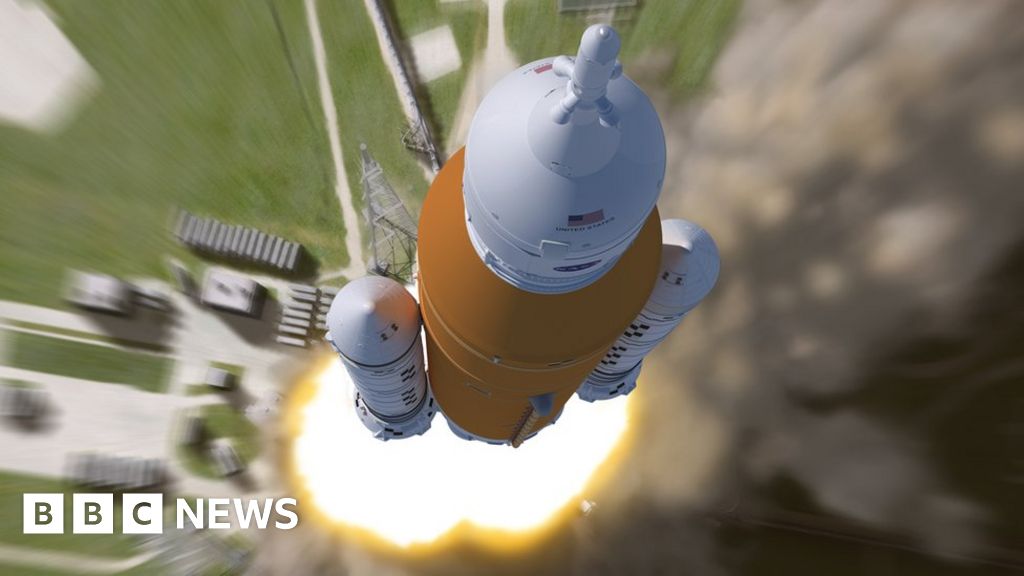
Jun 13, 2021
1 min, 33 secs
Nasa has been developing a huge rocket called the Space Launch System (SLS) to launch astronauts to the Moon - and eventually Mars.In the last 20 years, astronauts have been making routine trips to and from the International Space Station (ISS).
But the rocket also incorporates technology from the space shuttle.
The first version of the SLS will be called Block 1.The rocket will launch astronauts in Nasa's next-generation crew vehicle - Orion, boosting it to the speeds necessary to break out of low-Earth orbit and travel onwards to the Moon.The SLS consists of a giant core stage flanked by two solid rocket boosters (SRBs).The steam exits engine nozzles at speeds of 16,000 km/h (10,000 mph) to generate thrust - the force that propels a rocket through the air.The SRBs give the rocket extra power to escape gravity's clutches.These twin boosters stand more than 17 storeys tall and burn six tonnes of solid propellant each second.
If we use thrust as a measure, the SLS will be the most powerful rocket ever when it flies to space in 2021.A future version of the SLS - called Block 2 cargo - should approach the N1's thrust levels.But a vehicle called Starship, being developed by Elon Musk's company SpaceX, should exceed both - producing as much as 15 million pounds (66.7 Meganewtons) of thrust.
The SLS core stage is based on the space shuttle's foam-covered external tank.The solid rocket boosters play much the same role in both vehicles.
As an example of these different stresses, in the space shuttle, the RS-25 engines were canted up and away from the solid rocket boosters.But without significant modifications, no existing boosters have sufficient power to send Orion, astronauts and large cargo to the Moon in one flight - as the SLS would have.